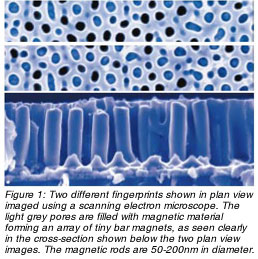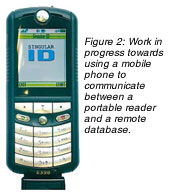|
by Adrian P BURDEN and Peter M MORAN
 irated goods and issues of brand protection constitute significant and growing problems today. Interpol estimates that 5-7 % of all world trade is in counterfeit goods. Not only does this practice damage manufacturers who lose revenue but in some cases it also affects the safety and security of the consumer who buys substandard or even dangerous goods. For example, the United States Food and Drug Administration estimates that 10% of the global medicine market encompasses counterfeit goods valued at a whopping US$32 billion. The problem extends beyond fake pharmaceuticals to such counterfeit consumables as non-sterile syringes and gauze and even substandard electronic medical equipment. irated goods and issues of brand protection constitute significant and growing problems today. Interpol estimates that 5-7 % of all world trade is in counterfeit goods. Not only does this practice damage manufacturers who lose revenue but in some cases it also affects the safety and security of the consumer who buys substandard or even dangerous goods. For example, the United States Food and Drug Administration estimates that 10% of the global medicine market encompasses counterfeit goods valued at a whopping US$32 billion. The problem extends beyond fake pharmaceuticals to such counterfeit consumables as non-sterile syringes and gauze and even substandard electronic medical equipment.
Many people are already aware of counterfeit branded luxury goods, software, entertainment media, and monetary instruments like credit cards. Manufacturers currently achieve brand protection by using watermarks and such identifiers as holograms, but these solutions rely on a consumer or checker's ability to discriminate between the genuine version and a reproduction - something few of us can do. Another common way to mark and identify an individual item is to use a serial number or barcode, which, unfortunately, can be copied with ease. Some companies have begun looking into the merits of radio frequency identification (RFID) tags to fine tune supply-chain logistics and offer some piracy protection. RFID chips, however, are not only relatively expensive but also subject to being overwritten or reproduced, obviating any brand-protection benefit.
The physical-security industry, which also faces major problems, has begun introducing biometrics to authenticate individual people by recording personal retina and fingerprint scans. However, verifying the person's accompanying documentation (passport or access card, for example) remains problematic.
Matermetrics
The Institute of Materials Research and Engineering (IMRE) has developed ways of producing unique magnetic identification tags.
These so-called fingerprints can be applied to objects of value, and the unique pattern associated with the object can be stored in a database for future verification. This process is analogous to biometrics so when the inventors apply fingerprints to such inanimate objects as luxury goods, medical supplies, or documents, they call it matermetrics.
The innovation stems from accepting and then promoting the natural disorder that occurs in many nanotechnological materials systems and harnessing the effect to an advantage. For example, by using a porous material in which the minute openings self-assemble differently every time, a unique pattern develops of different-sized and shaped features.
The processing also enables the pores to assimilate differing quantities of magnetic material, as Figure 1 shows. A reader can measure the spatial position and distribution of these features to provide a unique identifying signature difficult and prohibitively expensive to copy. Moreover, if additional small defects occur during the manufacturing process, they simply add variety to the identification tags rather than affect the yield, as is the case with virtually every other application of nanotechnology.
 The tags are very inexpensive to produce; in some formats it is estimated that the tags will cost less than half a US cent apiece. The reader technology also relies on magnetic read-heads that are already available and have a lower specification than those utilised in today's hard-disk-drive applications. Finally, the inventors can make the tags covert so that the fingerprints do not affect the appearance of the object nor take up large amounts of product real estate. The tags are very inexpensive to produce; in some formats it is estimated that the tags will cost less than half a US cent apiece. The reader technology also relies on magnetic read-heads that are already available and have a lower specification than those utilised in today's hard-disk-drive applications. Finally, the inventors can make the tags covert so that the fingerprints do not affect the appearance of the object nor take up large amounts of product real estate.
By using magnetic features that have structures on the submicron size, conventional lithographic techniques cannot be used to duplicate the subtleties that a magnetic sensor is capable of detecting. Moreover, by using the magnetic features to map the physical structure of the fingerprint, information is not actually recorded to the tag. As a result, it cannot be erased, rewritten, or cloned in the same way that a magnetic stripe on a credit card can.
The tags can also be rejuvenated by applying a magnetic field to reset all the domains, thus ensuring that tags can be left out in the field in a variety of environmental conditions and for prolonged time intervals. In the laboratory, the researchers have read individual tags over a hundred times without any obvious degradation in the fingerprint information that is used.
Demonstrator System
The team has assembled a demonstrator system to illustrate the application of the technology in real-life situations. For simplicity and clarity's sake, the fingerprints are currently made in a larger-size scale, enabling the use of more readily available lower resolution magnetic read-heads.
The system consists of the tagged objects, a reader, and a database that uses wavelet analyses to compare and identify fingerprints quickly and accurately. This approach is very similar to that employed by biometric systems. The investigators have also demonstrated an allmetal tag that can be used to label and identify engineering components in the automotive and aerospace industry.
Presently the group is working on a system that integrates a portable reader into a mobile phone (Figure 2). The system will enable identification of objects anywhere in the world where a cellular-network signal exists, sending the signature back to a database for authentication. In the future, every consumer will have the capacity to verify and authenticate suspect goods before making a purchase.
 The researchers intend to commercialise this technology by raising venture-capital financing and spinning out a high technology company (Singular ID) to take products rapidly to market. A business plan has been written with the aim of entering the market with tags suitable for medical supplies, pharmaceuticals, and luxury goods to offer plenty of opportunity for a fast growing business as well as mitigating the risk of slow uptake in some market sectors. The researchers intend to commercialise this technology by raising venture-capital financing and spinning out a high technology company (Singular ID) to take products rapidly to market. A business plan has been written with the aim of entering the market with tags suitable for medical supplies, pharmaceuticals, and luxury goods to offer plenty of opportunity for a fast growing business as well as mitigating the risk of slow uptake in some market sectors.
For more information contact Adrian P Burden at adrian-pb@imre.a-star.edu.sg, Peter Moran at p-moran@imre.a-star.edu.sg, or info@singular-id.com
 Click here to download the full issue for USD 6.50 Click here to download the full issue for USD 6.50
|


 irated goods and issues of brand protection constitute significant and growing problems today. Interpol estimates that 5-7 % of all world trade is in counterfeit goods. Not only does this practice damage manufacturers who lose revenue but in some cases it also affects the safety and security of the consumer who buys substandard or even dangerous goods. For example, the United States Food and Drug Administration estimates that 10% of the global medicine market encompasses counterfeit goods valued at a whopping US$32 billion. The problem extends beyond fake pharmaceuticals to such counterfeit consumables as non-sterile syringes and gauze and even substandard electronic medical equipment.
irated goods and issues of brand protection constitute significant and growing problems today. Interpol estimates that 5-7 % of all world trade is in counterfeit goods. Not only does this practice damage manufacturers who lose revenue but in some cases it also affects the safety and security of the consumer who buys substandard or even dangerous goods. For example, the United States Food and Drug Administration estimates that 10% of the global medicine market encompasses counterfeit goods valued at a whopping US$32 billion. The problem extends beyond fake pharmaceuticals to such counterfeit consumables as non-sterile syringes and gauze and even substandard electronic medical equipment.
 The tags are very inexpensive to produce; in some formats it is estimated that the tags will cost less than half a US cent apiece. The reader technology also relies on magnetic read-heads that are already available and have a lower specification than those utilised in today's hard-disk-drive applications. Finally, the inventors can make the tags covert so that the fingerprints do not affect the appearance of the object nor take up large amounts of product real estate.
The tags are very inexpensive to produce; in some formats it is estimated that the tags will cost less than half a US cent apiece. The reader technology also relies on magnetic read-heads that are already available and have a lower specification than those utilised in today's hard-disk-drive applications. Finally, the inventors can make the tags covert so that the fingerprints do not affect the appearance of the object nor take up large amounts of product real estate.
 The researchers intend to commercialise this technology by raising venture-capital financing and spinning out a high technology company (Singular ID) to take products rapidly to market. A business plan has been written with the aim of entering the market with tags suitable for medical supplies, pharmaceuticals, and luxury goods to offer plenty of opportunity for a fast growing business as well as mitigating the risk of slow uptake in some market sectors.
The researchers intend to commercialise this technology by raising venture-capital financing and spinning out a high technology company (Singular ID) to take products rapidly to market. A business plan has been written with the aim of entering the market with tags suitable for medical supplies, pharmaceuticals, and luxury goods to offer plenty of opportunity for a fast growing business as well as mitigating the risk of slow uptake in some market sectors.
 Click here to download the full issue for USD 6.50
Click here to download the full issue for USD 6.50